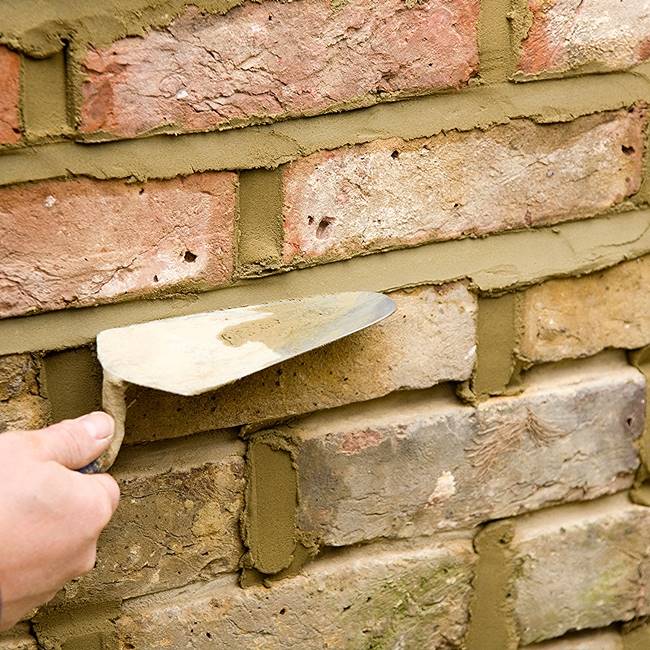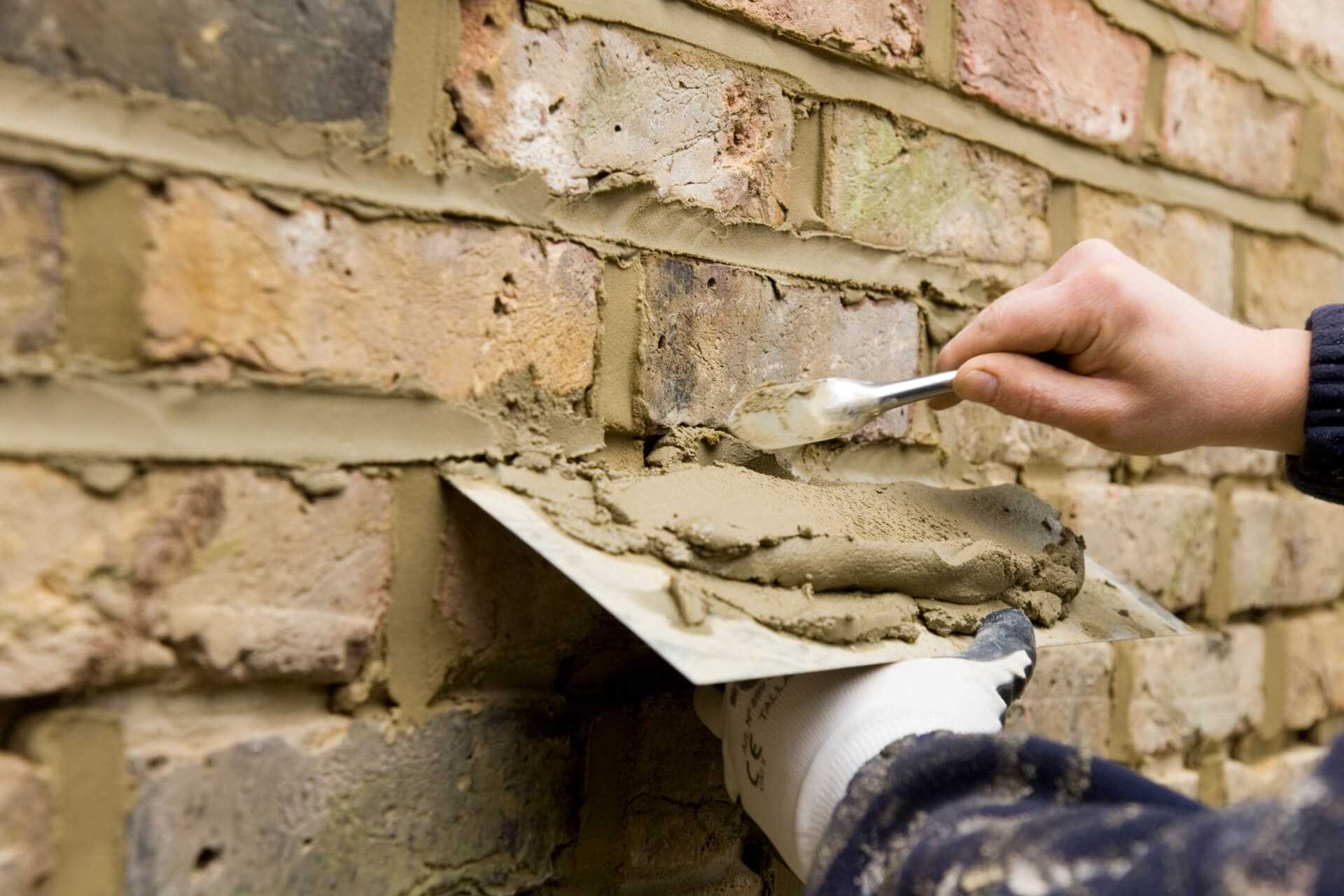Here is a list of some of the typical repointing services we provide
 Chimney Repointing
Chimney Repointing
Don't let the elements compromise the integrity of your cherished chimney or fireplace! With time, wind, rain, and frost can deteriorate the mortar that holds your chimney together, while the sulphur produced by burning wood or coal can further weaken it from within. That's where chimney repointing comes to the rescue. By repairing the mortar, you can halt any further damage and ensure the longevity and watertightness of your chimney. Embrace the warmth and peace of mind that comes with a well-maintained chimney, shielding your beloved fireplace from the harsh effects of weather and preserving it as the heart of your cosy gatherings for years to come.
 Brick Repointing
Brick Repointing
Brick repointing is crucial for maintaining brick structures, as continuous exposure to natural elements like wind, rain, and frost can damage the mortar holding the bricks together. Neglecting deteriorating brick pointing may lead to leaks, damp walls, water damage, mould growth, and structural instability. Additionally, it detracts from the aesthetic appeal of the building. Therefore, as a responsible brick building owner, it is essential to prioritise repointing to prevent potential damage and ensure the longevity, strength, and beauty of your structure. Act now and invest in repointing to avoid the costly consequences of neglect.
 Stone Repointing
Stone Repointing
Nature’s relentless forces can cause significant wear to the mortar pointing in stone walls, making stone repointing essential for restoring structural integrity. This critical maintenance step prevents further deterioration, using materials like sand cement mortar, lime mortar, or lime putty tailored to specific needs. Stone walls endure harsh conditions, from hailstorms and rain to strong winds, often developing cracks and gaps that compromise stability. Ignoring these issues invites water damage and pests. Professional stone repointing services restore your walls to their original strength and beauty, ensuring long-lasting durability.
 Lime Mortar Repointing
Lime Mortar Repointing
Unlike modern sand and cement mortar, lime mortar uses a blend of natural hydraulic lime and sand, achieving an authentic, harmonious finish. Lime mortar is a top choice for masonry repointing, especially in listed building restoration, where it preserves the structure’s original design. Beyond aesthetics, lime mortar repointing is an art, with each mix tailored to a project’s unique needs. Its breathability supports ventilation and moisture control, guarding against water damage and mould growth. Environmentally friendly and free from the harmful chemicals in modern mortars, lime mortar repointing is ideal for a sustainable, historically authentic transformation.
 Lime Putty Repointing
Lime Putty Repointing
When repointing, choosing between sand and cement mortar or traditional lime mortar depends on key factors. Sand and cement mortar, a modern mix, offers excellent strength and durability, making it ideal for contemporary buildings needing a robust finish to withstand harsh weather. However, for older buildings, preserving historic aesthetics and character is crucial, often necessitating the use of traditional lime mortar. Consulting a professional is essential to assess the masonry and select the most suitable mortar mix, ensuring effective repointing that respects both the building's heritage and visual appeal.
 Sand Cement Mortar Repointing
Sand Cement Mortar Repointing
When it comes to repointing, the choice between sand and cement mortar or traditional lime mortar depends on various factors. Sand and cement mortar, a contemporary blend of sand and cement, offers exceptional strength and durability, making it a popular option for modern buildings that require a robust and long-lasting finish capable of withstanding harsh weather conditions. However, for older buildings, preserving their historic aesthetics and character is paramount, which may call for the use of traditional lime mortar. Consulting with a professional is crucial to assessing the existing masonry and determining the most suitable mortar mix, ensuring that the repointing work achieves both effectiveness and aesthetic harmony while safeguarding the building's heritage and charm.
 Sand Cement & Lime Mortar Repointing
Sand Cement & Lime Mortar Repointing
Sand, cement, and lime mortar is a versatile blend, combining the durability of sand and cement with the breathability of lime, offering benefits beyond traditional lime mortar. This mix is ideal for newer buildings needing a strong, modern finish. However, choosing the correct mortar mix depends on factors like the building's age, style, and specific needs. Consulting a professional ensures the chosen mortar revitalises the structure while enhancing its appearance. Heritage buildings often need traditional lime mortar to preserve historical character. Professional advice helps achieve both durability and harmony.
 Patio Repointing
Patio Repointing
As the years go by, the pointing on a patio can suffer from weathering, cracks, and wear, diminishing its charm. Luckily, there are numerous patio repointing products that can breathe new life into your outdoor space. A swift and effective option is a cement- or resin-based patio jointing compound that works like magic. Alternatively, you can opt for the tried-and-true approach of using a sand and cement mortar mix, which remains a viable choice for patio repointing. Consulting with a professional is advisable to determine the best solution tailored to your specific requirements and ensure a successful patio restoration.
 Wall Repointing
Wall Repointing
If your garden wall or any other wall shows signs of wear, like cracked or weathered mortar, repointing may be needed. Choosing the right mortar mix, whether for stone or brick, is key. Lime mortar, breathable and ideal for traditional walls, contrasts with sand and cement mortar, which offers durability for modern structures. Walls deteriorate from weather over time, so professional guidance ensures the best mortar mix for stability. Lime mortar suits heritage walls, allowing moisture to escape, while sand and cement mortar better resists erosion, suiting newer builds. Consulting experts ensures the right choice, keeping your wall strong and visually appealing.
 Ridge Tile & Verge Repointing
Ridge Tile & Verge Repointing
Ridge tile and verge repointing is essential to maintaining a roof’s structure and appearance. Skilled professionals replace weakened mortar, reinforcing the roof, prolonging its life, and preventing costly water damage. Regular repointing protects your investment by ensuring both durability and curb appeal. This process is ideal for preserving the charm of historic buildings and securing modern structures, enhancing the roof's functionality and appearance. Repointing by skilled roofing professionals offers a reliable, lasting solution, providing homeowners with peace of mind and effective roof protection for years to come.
 Fine Ashlar Repointing
Fine Ashlar Repointing
Fine ashlar pointing is a technique used with ashlar masonry that involves repointing finely cut stones laid with minimal mortar joints, typically just a few millimetres wide. In fine ashlar pointing, mortar joints are finished with precision to create a smooth, flush surface that aligns perfectly with the masonry. This approach maintains the clean, refined look of the stonework, common in historic and high-quality architectural structures. Precision is crucial in fine ashlar pointing, as even slight inconsistencies in the mortar can disrupt the overall aesthetic, detracting from the uniformity and elegance of the finely cut stones.
 Grout Injection Repointing
Grout Injection Repointing
Grout injection repointing is a specialised technique for stabilising masonry by injecting a fluid grout mix into voids or deep cracks within mortar joints. This method is often used where traditional repointing is not possible, such as with older or structurally compromised masonry or where internal voiding is extensive. The grout, often a blend of cement, lime, and additives, is injected under controlled pressure to fill gaps, bond loose materials, and reinforce the wall without dismantling. This process not only strengthens the structure but also improves its durability and resistance to future damage, making it ideal for heritage restoration and long-term preservation.


